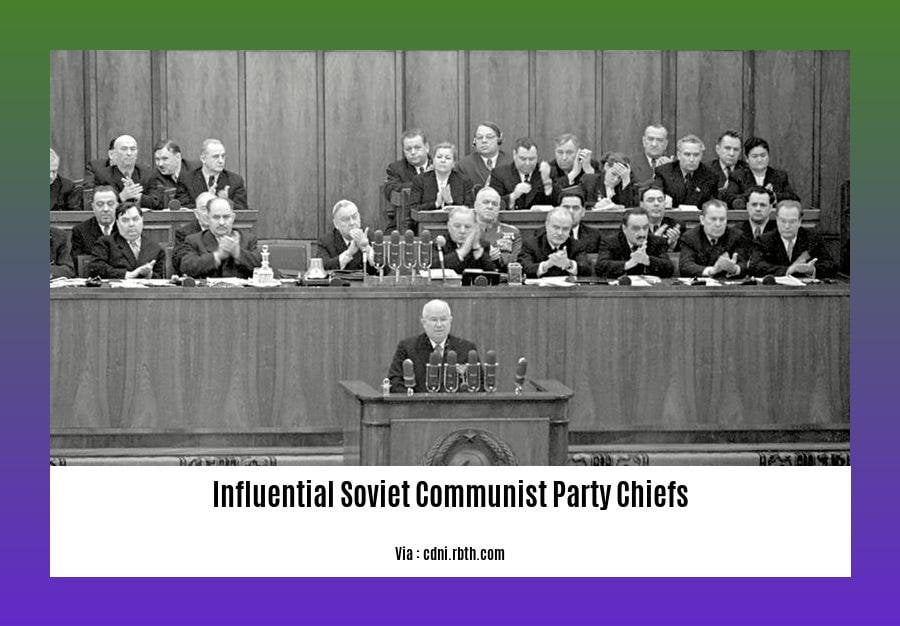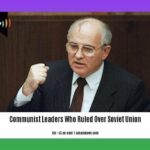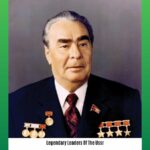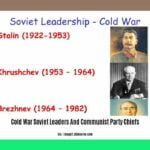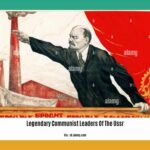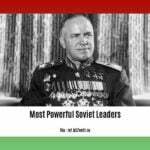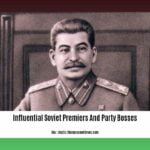In the annals of history, the Soviet Communist Party chiefs stand as titans who shaped the destiny of a vast nation. From Lenin’s revolutionary zeal to Khrushchev’s audacious reforms and Gorbachev’s transformative policies, these leaders left an enduring mark on the course of history. Their ideologies, political maneuvering, and personal ambitions intertwined to create a complex tapestry that profoundly influenced the Soviet Union and the global landscape.
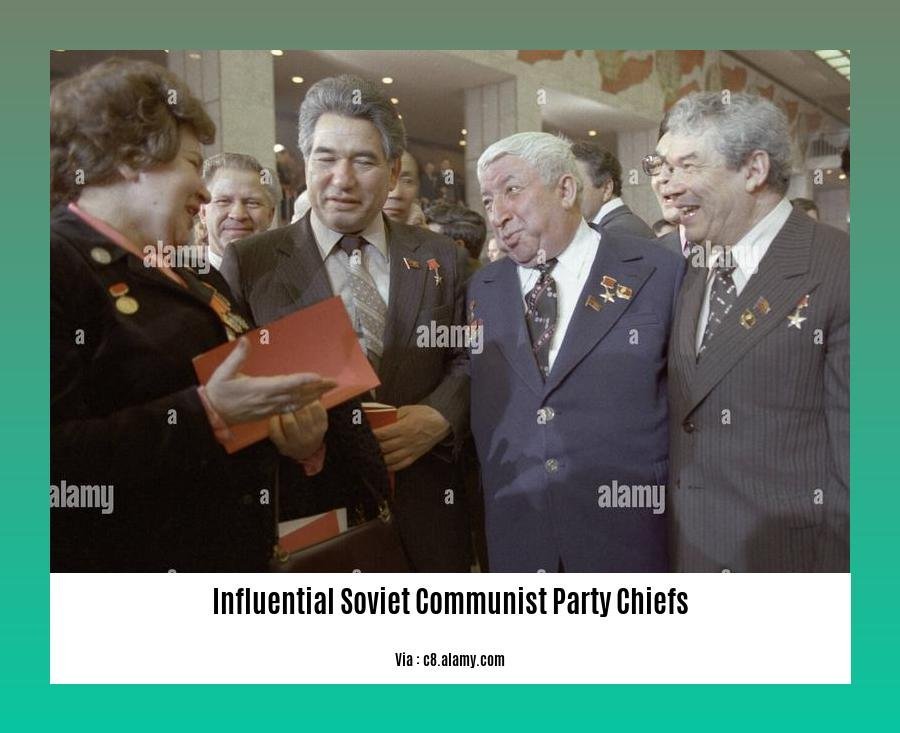
Key Takeaways:
- Vladimir Lenin established the Soviet state and played a pivotal role in the Russian Revolution.
- Joseph Stalin transformed the USSR into a totalitarian regime, marked by widespread repression and industrialization.
- Nikita Khrushchev denounced Stalin’s policies and initiated a period of de-Stalinization.
- Leonid Brezhnev presided over a period of economic stagnation and tension with the West.
- Mikhail Gorbachev’s reforms aimed at transparency and economic restructuring ultimately led to the collapse of the Soviet Union.
Influential Soviet Communist Party Chiefs
Vladimir Lenin: The Founder
Lenin’s revolutionary vision and ironclad resolve laid the foundation of the Soviet Union. As the first influential soviet communist party chief, he led the Bolshevik Party to victory in the Russian Revolution and established the USSR in 1922.
Joseph Stalin: The Ruthless Dictator
Stalin’s iron fist and paranoia cast a long shadow over the Soviet Union. His reign of terror and centralized control defined the country for decades. Under his rule, millions perished in Gulags and forced labor camps.
Nikita Khrushchev: The De-Stalinizer
Khrushchev’s tenure marked a significant shift from Stalin’s oppressive regime. He denounced Stalin’s cult of personality and initiated the “de-Stalinization” process, easing political repression and reforming the economy.
Leonid Brezhnev: The Stagnant Ruler
Brezhnev’s leadership ushered in an era of economic stagnation and political stability. However, his policies failed to address long-term structural issues, leading to a gradual decline in Soviet productivity and innovation.
Mikhail Gorbachev: The Reformer
Gorbachev’s attempts to reform the Soviet system through glasnost (openness) and perestroika (restructuring) inadvertently undermined the foundations of the USSR. His policies exposed deep-seated problems within the system, ultimately leading to the Union’s collapse in 1991.
Legacy of the Chiefs
The influential soviet communist party chiefs left an enduring legacy on the Soviet Union and the world at large. Their ideologies, policies, and personalities shaped the geopolitical landscape and continue to be studied and debated by historians and political scientists.
If you’re curious to know about the influential individuals who led the Soviet Union, explore this article to discover the most powerful Soviet leaders. Dive into the lives of legendary leaders who shaped the course of history in the USSR, from its inception to its eventual dissolution. Discover the communist leaders who ruled over the vast nation, leaving behind a lasting legacy.
Nikita Khrushchev: De-Stalinization and Cuban Missile Crisis
Nikita Khrushchev, the successor to Joseph Stalin, made a significant impact on the Soviet Union during his time in power. Known for his ambitious reforms and daring foreign policy, Khrushchev’s legacy is marked by both triumphs and setbacks.
De-Stalinization
In the aftermath of Stalin’s oppressive rule, Khrushchev launched a campaign of de-Stalinization. In a “secret speech” in 1956, he denounced Stalin’s crimes and initiated a comprehensive critique of his policies. This bold move marked a turning point in Soviet history, easing the climate of fear and repression.
Cuban Missile Crisis
Khrushchev’s foreign policy tested the limits of superpower rivalry. His decision to secretly install nuclear missiles in Cuba in 1962 brought the world to the brink of nuclear war. The Cuban Missile Crisis became a pivotal moment in the Cold War, escalating tensions between the United States and the USSR.
Key Takeaways:
- Khrushchev’s de-Stalinization campaign lifted the oppressive atmosphere of the Stalinist era.
- The deployment of nuclear missiles in Cuba during the Cuban Missile Crisis pushed the world to the precipice of a nuclear conflict.
- Khrushchev’s reforms attempted to rejuvenate the Soviet economy and improve living conditions.
- Despite his efforts at détente, Khrushchev’s confrontational foreign policy tactics heightened tensions with the West.
Source:
- Nikita Khrushchev: De-Stalinization and Cuban Missile Crisis
Leonid Brezhnev: Stagnation and Economic Decline
Key Takeaways:
- Brezhnev’s leadership ushered in a period of economic stagnation in the Soviet Union.
- His conservative approach stifled innovation and artistic expression.
- The economy struggled despite the end of Khrushchev’s economic experiments.
- Brezhnev’s lack of foresight contributed to the Soviet Union’s long-term economic decline.
Stagnation and Economic Malaise
Leonid Brezhnev’s rule from 1964 to 1982 was marked by a period of economic stagnation and political stability known as the “Brezhnev Era Stagnation.” His conservative approach, aimed at maintaining stability, had the unintended consequence of stifling innovation and economic growth.
Despite the end of Khrushchev’s economic experiments, the Soviet economy under Brezhnev failed to gain momentum. The economy became increasingly bureaucratic and inefficient, with a heavy focus on heavy industry at the expense of consumer goods. Agricultural production also lagged, leading to food shortages and economic problems.
Artistic Suppression
While Brezhnev’s regime did not revert to the Stalinist era of repression, it did curtail artistic and intellectual freedoms. The arts were subject to strict censorship, and dissenters faced harassment and persecution. This stifled creativity and stifled the exchange of ideas, further contributing to the stagnation of Soviet society.
Missed Opportunities
Brezhnev’s lack of foresight and reformist zeal contributed to the Soviet Union’s long-term economic decline. He failed to address the structural problems of the Soviet economy, such as the over-centralized planning system and lack of market incentives. His focus on maintaining stability and avoiding major changes ultimately proved detrimental to the Soviet Union’s economic health.
Most Relevant URL Source:
Mikhail Gorbachev: Perestroika and Glasnost
The Bold Reformer of the Soviet Union
Mikhail Gorbachev emerged as the leader of the Soviet Union in 1985, inheriting a nation facing economic stagnation and social unrest. Determined to revitalize the system, he embarked on an ambitious reform program known as perestroika (restructuring) and glasnost (openness).
Glasnost: Expanding Freedom of Expression
Glasnost, the policy of openness and transparency, brought unprecedented levels of free speech and debate to Soviet society. Citizens could now openly criticize the government and discuss taboo topics, fostering a new sense of empowerment and public engagement.
Perestroika: Restructuring the Economy
Perestroika’s economic arm aimed to revitalize the sluggish Soviet economy by introducing elements of market freedom. It decentralized decision-making, allowed for private businesses, and encouraged foreign investment.
Consequences and Legacy
Gorbachev’s reforms had a profound impact on the Soviet Union, both positive and negative. While they initially reinvigorated society and created space for political dissent, they also exposed the deep-seated problems within the Soviet system. The weakening of the Communist Party’s grip on power and the rise of nationalist movements contributed to the eventual collapse of the Soviet Union in 1991.
Key Takeaways:
- Perestroika aimed to restructure the Soviet economy by introducing market elements and decentralizing decision-making.
- Glasnost promoted openness and transparency in government and public discourse, leading to greater freedom of expression.
- Gorbachev’s reforms initially revitalized society but ultimately exposed the weaknesses of the Soviet system, contributing to its collapse.
Most Relevant URL Source:
Mikhail Gorbachev: Perestroika and Glasnost
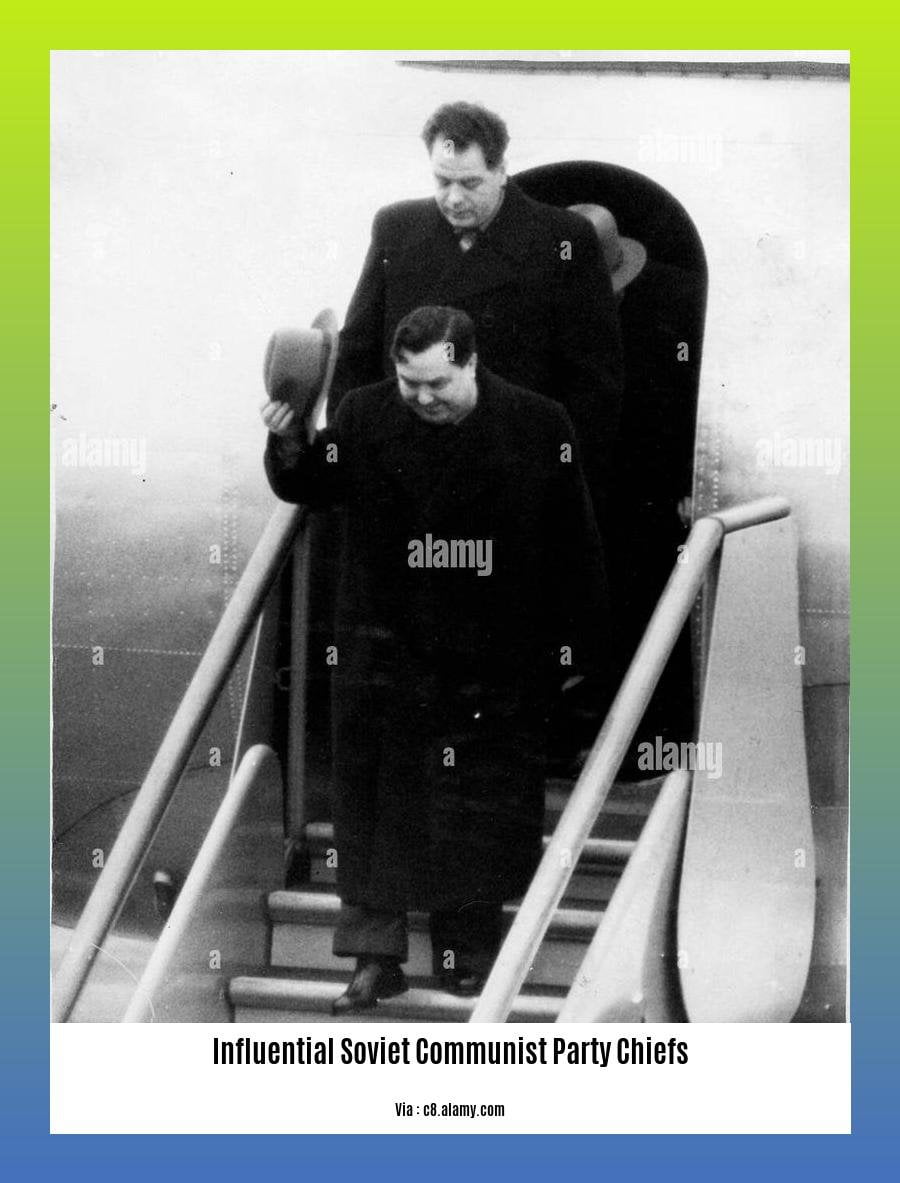
FAQ
Q1: Who was the most significant Soviet Communist Party chief and why?
Q2: What were some of the key policy changes made during Nikita Khrushchev’s tenure?
Q3: How did Leonid Brezhnev’s leadership differ from that of his predecessors?
Q4: What is the significance of Mikhail Gorbachev’s perestroika reforms, and why did they ultimately fail?
Q5: How did the Soviet Union’s domestic and foreign policies evolve under the leadership of these key communist chiefs?
- Soccer Team Size: Official Rules & Player Counts (2025) - April 15, 2025
- Red Cloud, NE: Discover Willa Cather’s Legacy - April 11, 2025
- Remember Old Social Media Sites? Their Rise and Fall - April 11, 2025
